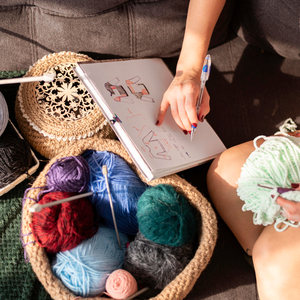Knitting Kits in the US: A Comprehensive Guide for Beginners and Hobbyists
الجسم
Knitting continues to enjoy a revival in the United States, not only as a practical skill but also as a therapeutic and creative outlet. As more people explore this traditional craft, the demand for structured and accessible resources has grown. One such resource is the knitting kit. Designed to simplify the process and offer convenience, knitting kits serve as all-in-one packages that cater to various experience levels. This guide explores the components, types, advantages, and considerations surrounding knitting kits in the U.S. context, providing a clear understanding of how they support both beginner and seasoned knitters.
What Are Knitting Kits?
Knitting kits are curated sets that include the materials and instructions needed to complete a specific project. Typically, a kit contains yarn, knitting needles, and a pattern. Some also include additional items like stitch markers, darning needles, or measuring tapes. These kits eliminate the need to source individual components, making them ideal for those new to the craft or seeking convenience.
Knitting kits are available for a wide range of projects—everything from simple scarves and beanies to complex garments and home décor items. Their increasing popularity reflects a broader trend toward accessible crafting experiences.
Common Components of Knitting Kits
While the contents of knitting kits can vary, most share some standard elements:
-
Yarn: The type and amount are carefully selected to match the project. Yarn may come in natural fibers, synthetic blends, or specialty options depending on the design.
-
Knitting Needles: These may be straight, circular, or double-pointed, and are matched to the yarn weight and pattern requirements.
-
Pattern Instructions: Clear, step-by-step instructions guide the knitter through the project. Some kits may offer both written and charted directions.
-
Extras: Some kits include accessories like stitch markers, row counters, tapestry needles, or project bags for added convenience.
These pre-packaged tools remove the guesswork from starting a new project, allowing the user to focus entirely on the craft.
Types of Knitting Kits
Knitting kits are categorized by project type, complexity level, and user intent. Understanding the different types can help individuals choose the most suitable option:
1. Beginner Knitting Kits
These kits focus on easy patterns and include thorough instructions for basic stitches like knit and purl. Common beginner projects include scarves, dishcloths, and simple hats. These kits often come with tips on how to hold needles, read a pattern, and check gauge.
2. Intermediate and Advanced Kits
For those with some experience, kits may include more complex stitch patterns, shaping techniques, or finishing work. Items like sweaters, cardigans, socks, or shawls may fall into this category.
3. Kids’ Knitting Kits
Specially designed for younger audiences, these kits use larger needles and brightly colored yarn. Instructions are simplified, and projects may include stuffed animals, basic accessories, or friendship bracelets.
4. Themed and Seasonal Kits
These kits are geared toward holidays or seasonal decor. Popular options include Christmas stockings, Halloween accessories, or Valentine's-themed items.
5. Luxury and Artisan Kits
These may feature hand-dyed yarn, eco-friendly packaging, or collaboration with well-known pattern designers. While more costly, they appeal to hobbyists looking for unique and high-quality materials.
Benefits of Using Knitting Kits
Knitting kits offer numerous advantages, particularly for those new to the craft or looking to explore new project types. Some key benefits include:
-
Convenience: All necessary materials are included, eliminating the need to shop for matching yarn and tools.
-
Confidence Building: Following a curated set of instructions helps reduce the likelihood of mistakes and builds skill in a structured way.
-
Time-Saving: Pre-measured yarn and matching needles simplify the preparation phase.
-
Portability: Kits are often compact and easy to carry, making them suitable for travel or group knitting sessions.
-
Giftability: Many people purchase knitting kits as gifts, as they’re packaged attractively and suitable for a range of age groups.
By bundling essential components into one package, knitting kits support both learning and creativity.
Factors to Consider When Choosing Knitting Kits
With a wide variety of knitting kits available in the US market, there are several factors to keep in mind when selecting the right one:
1. Skill Level
Each kit is typically labeled with a difficulty rating. Beginners should look for kits marked “easy” or “starter,” while more experienced knitters may prefer intermediate or advanced options.
2. Project Type
Knitters should consider whether they want to create a wearable item, a decorative piece, or something functional. The choice of project influences yarn type, pattern complexity, and time commitment.
3. Yarn Quality
Yarn can vary greatly in terms of fiber content, texture, and durability. Kits that include high-quality yarn often result in better finished products and more enjoyable knitting experiences.
4. Instructions Clarity
Well-written, easy-to-understand instructions are essential, especially for those learning new techniques. Look for kits that include visuals, charts, or online video tutorials if needed.
5. Customization Options
Some kits allow for yarn color choice or project size variations, offering more creative flexibility.
These considerations help ensure a rewarding and frustration-free crafting experience.
Availability and Trends in the US Market
In the United States, knitting kits are widely available both in-store and online. Craft stores often stock kits tailored to current trends or seasonal themes. Additionally, digital platforms have expanded access to kits from independent designers, small businesses, and sustainable brands.
Recent trends in knitting kits include:
-
Eco-Conscious Packaging: More kits are using recyclable materials and minimizing plastic.
-
Digital Integration: Some kits include QR codes that link to video tutorials or pattern updates.
-
Subscription-Based Kits: Monthly or quarterly deliveries keep hobbyists engaged with fresh projects and new challenges.
-
Collaborative Kits: Some kits result from collaborations between pattern designers and yarn producers, combining artistry with quality.
These trends reflect consumer interest in sustainability, learning, and long-term engagement with the craft.
Educational and Therapeutic Aspects
Knitting kits also serve educational and therapeutic functions. Schools, community centers, and wellness programs across the US have adopted kits as tools for:
-
Teaching Fine Motor Skills: Especially beneficial for children and older adults.
-
Stress Reduction: The repetitive motion of knitting is known to promote relaxation and mindfulness.
-
Creativity and Expression: Kits offer an outlet for self-expression and artistic exploration.
-
Social Interaction: Group knitting based on kits fosters community and conversation.
These uses highlight the growing recognition of knitting as more than a hobby—it’s a valuable tool for mental and emotional well-being.
The Role of Knitting Kits in Modern Craft Culture
Knitting kits play a significant role in the resurgence of crafting culture in the U.S. They lower the barrier to entry for newcomers, make crafting more accessible, and promote the continuation of traditional skills in a modern format.
Kits also support a wide variety of identities—whether one is a casual hobbyist, a dedicated fiber artist, or someone looking to try a new creative pursuit. With minimal investment and a rewarding hands-on experience, knitting kits foster a culture of making, patience, and self-sufficiency.
Conclusion
Knitting kits have become an essential part of the contemporary crafting landscape in the United States. They offer convenience, structure, and inspiration to both new and experienced knitters. Whether used as a learning tool, a gift, or a way to relax and create, these kits provide a guided yet creative experience that supports the timeless art of knitting.
With thoughtful selection and an open mind, anyone can enjoy the rewards of completing a project with the help of a knitting kit. As the craft continues to grow and evolve, knitting kits will remain a cornerstone of its accessibility and appeal.








تعليقات